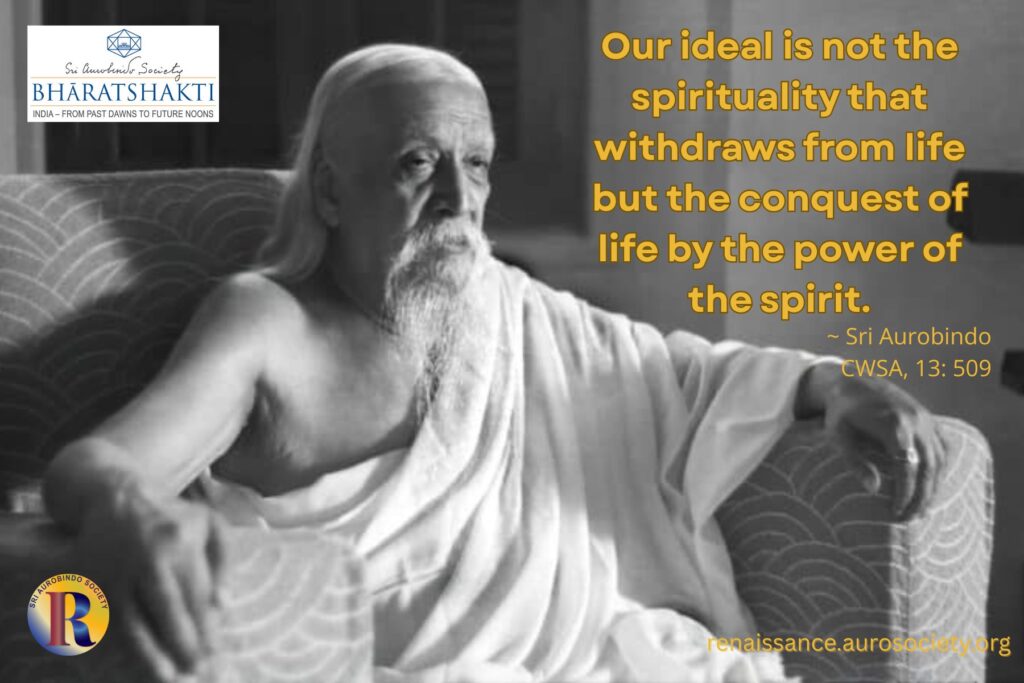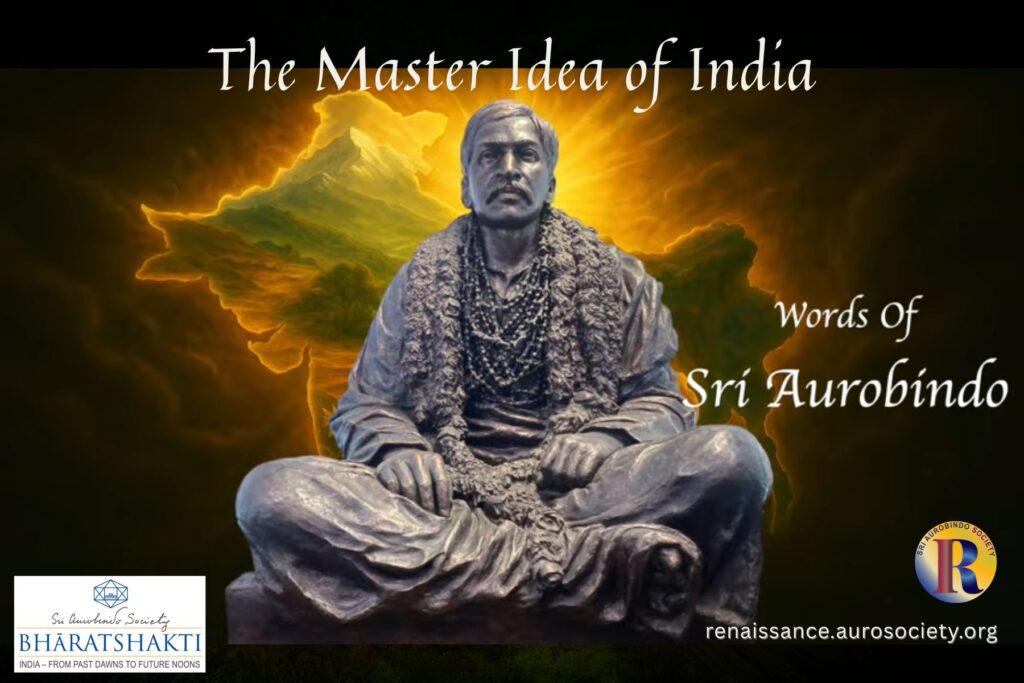Continued from PART 5
Vyasa’s Crest-Jewel
If Sri Aurobindo recorded in epic terms the secular legend of Savitri from the Mahabharata, he also wrote an epic commentary on the crest-jewel of the itihasa, the Bhagavad Gita. The Gita, of course, is a pocket spiritual encyclopaedia, for all spiritual problems are “briefly but deeply dealt with” in it, and in his Essays on the Gita Sri Aurobindo “has tried to bring out all that fully”.
Almost every great philosopher and thinker has commented on the Gita. And in our own country Tilak, Gandhi, Radhakrishnan, Rajagopalachari and Vinobha Bhave — these among others — have made the Gita a text (or pretext) to present their own philosophies.
The Aurobindonian version, however, is no clarion-call for any dialectical warfare.
The Kuru-Pandava struggle in the Mahabharata is a profound piece of social history. The Gita placed at the climactic moment of the struggle is seen as an intensely human document in spite of its appearing as no more than an extended question-and-answer session.
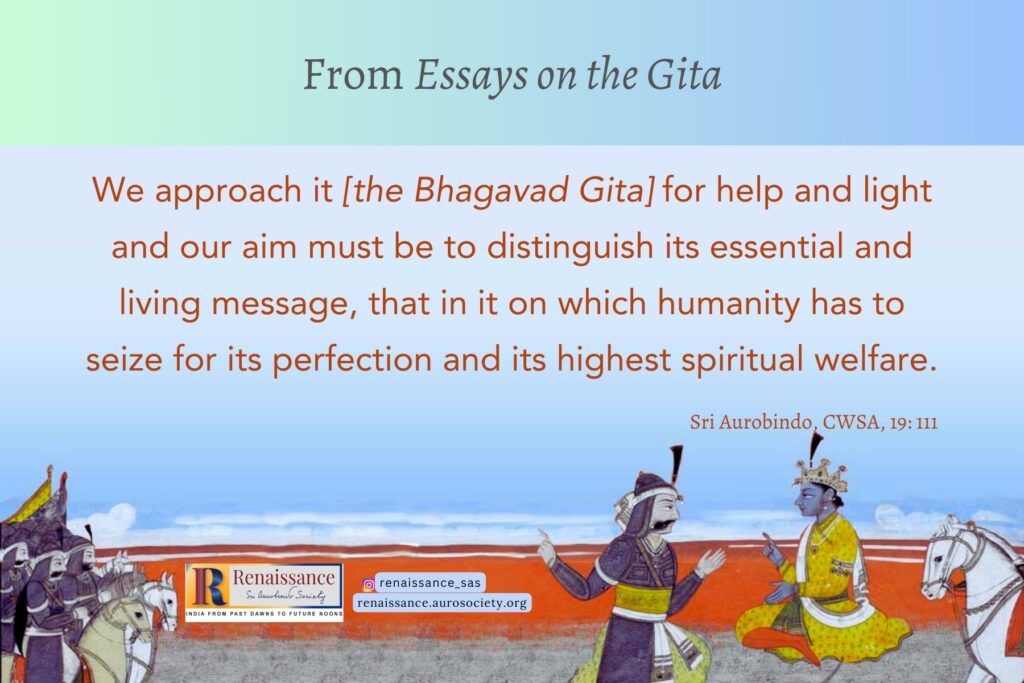
History is a thing of the past but the Gita is a continuing experience, a harmony of “the three great means and powers, Love, Knowledge and Works, through which the soul of man can directly approach and cast itself into the Eternal” (Sri Aurobindo, CWSA, Vol. 19, p. 9). Sri Aurobindo explains:
Our object, then, in studying the Gita will not be a scholastic or academical scrutiny of its thought, nor to place its philosophy in the history of metaphysical speculation, nor shall we deal with it in the manner of the analytical dialectician. We approach it for help and light and our aim must be to distinguish its essential and living message, that in it on which humanity has to seize for its perfection and its highest spiritual welfare.
~ CWSA, Vol. 19, p. 11
Sri Aurobindo finds a significance in the context in which the Gita is born.
The teaching is not from a personality like Christ or the Buddha. Nor is it the fruit of a spiritual age like that of the Vedas. The message of the Gita, according to Sri Aurobindo, is given as. . .
. . . an episode in an epic history of nations and their wars and men and their deeds and arises out of a critical moment in the soul of one of its leading personages face to face with the crowning action of his life, a work terrible, violent and sanguinary, at the point when he must either recoil from it altogether or carry it through to its inexorable completion . . .
~ CWSA, Vol. 19, p. 12
The teaching of the Gita must therefore be regarded not merely in the light of a general spiritual philosophy or ethical doctrine, but as bearing upon a practical crisis in the application of ethics and spirituality to human life.
From our archives:
Krishna’s Butter: Taking Wisdom of Bhagavad Gita to Children and Youth (Video)
Sri Aurobindo accepts the historicity of Krishna (the Chhandogya Upanishad itself refers to Krishna and Dhritarashtra). And at the same time allows the tradition of Avatarhood to mingle with the historical personage. Throughout the epic we have Krishna emphasising the necessity of action. The idea is given a vivid representation by the Kurukshetra scene:
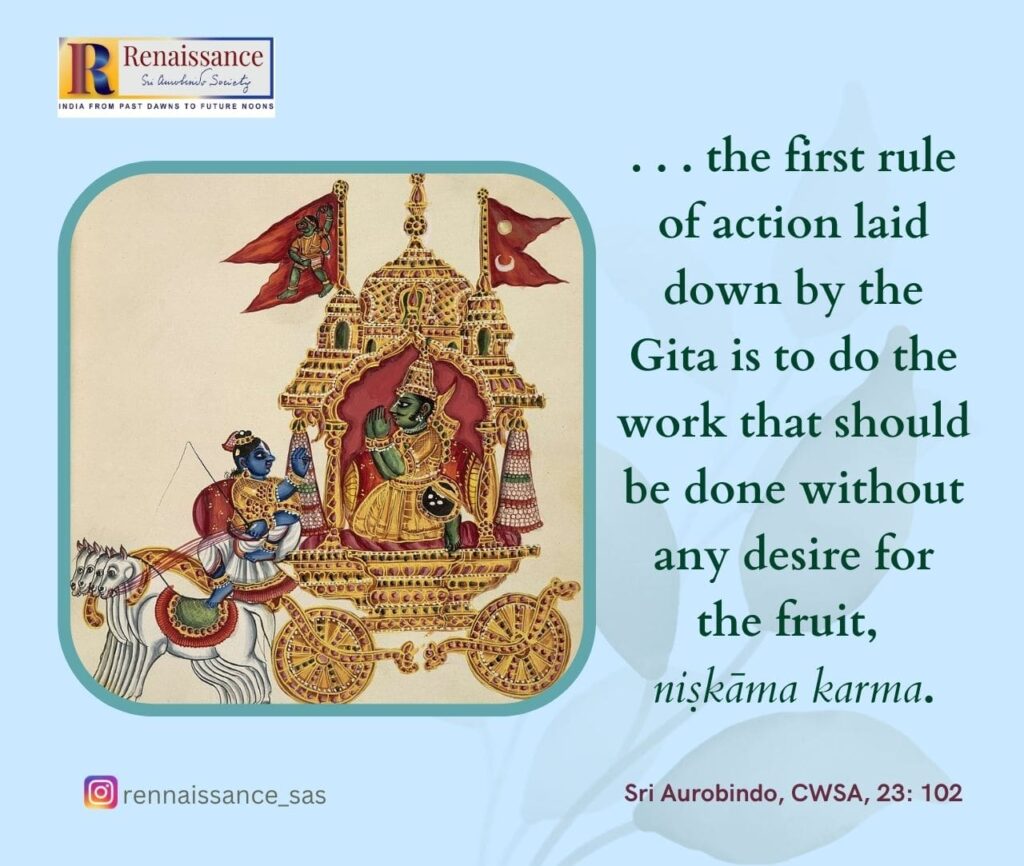
Arjuna and Krishna, this human and this divine, stand together not as seers in the peaceful hermitage of meditation, but as fighter and holder of the reins in the clamorous field, in the midst of the hurtling shafts, in the chariot of battle.
~ CWSA, Vol. 19, p. 19
The Teacher of the Gita is therefore not only the God in man who unveils Himself in the world of knowledge, but the God in man who moves our whole world of action, by and for whom all our humanity exists and struggles and labours, towards whom all human life travels and progresses. He is the secret Master of works and sacrifice and the Friend of the human peoples.
Arjuna, then, is the struggling human soul. He is transformed from “that all-embracing inner bankruptcy” when he finds no dharma anywhere to the calm, self-possessed individual when he gives up all dharmas “except the one broad and vast rule of living consciously in the Divine and acting from that consciousness”.
Sri Aurobindo’s massive and many-limbed argument in the Gita that leads to the tremendous transformation often rises to heights of poetry, and the last chapter is truly magnificent.
The key stanza in the whole Gita is, without question, the sixty-sixth in the last chapter: “Abandon all dharmas and take refuge in Me alone. I will deliver Thee from all sin and evil, do not grieve.” Sri Aurobindo says that these words “express the most complete, intimate and living relation possible between God and man”. (CWSA, Vol. 19, p. 541)
Rejection of all dharmas and total surrender to the Divine: such should be the definitive action. The rest would follow, for now the Divine would take up the responsibility. Krishna tells Arjuna in effect:
This then is the supreme movement, this complete surrender of your whole self and nature, this abandonment of all Dharmas to the Divine who is your highest Self, this absolute aspiration of all your members to the supreme spiritual nature. . . This is the supreme way because it is the highest secret and mystery and yet an inner movement progressively realisable by all.
~ CWSA, Vol. 19, p. 594
Conclusion
Thus, even a brief glance convinces us of how considerable has been the influence of Mahabharata on Aurobindonian thought. Indeed the Vyasa elan permeates all Sri Aurobindos’ work, whether narrative poetry, political argument, ethical perspective or spiritual thought.
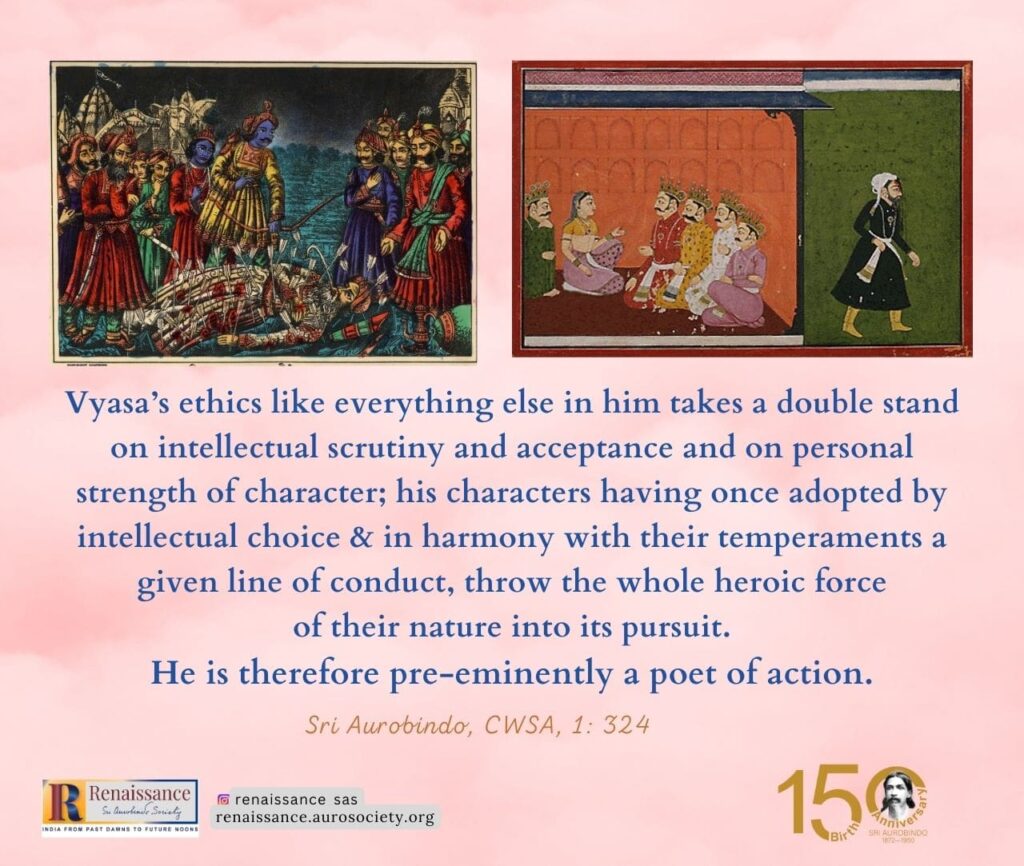
In the Mahabharata, we are not concerned with symbols. Vyasa takes up Life in raw, examines and places before us as an example, a way of life, a ray of hope. He himself is everywhere in the epic. Writes Sri Aurobindo of Vyasa:
A wide searching mind, historian, statesman, orator, a deep and keen looker into ethics and conduct, a subtle and high-aiming politician, theologian and philosopher, it is not for nothing that Hindu imagination makes the name of Vyasa loom so large in the history of Aryan thought and attributes to him work so important and manifold.
~ Sri Aurobindo, CWSA, Vol. 1, pp. 322-323
Sri Aurobindo too has been all these to the Indian renaissance of this [20th] century.
Sri Aurobindo found in the Mahabharata the vast field, where Dharma is found in its several manifestations and remains a lighthouse of the spirit for Indians through the centuries. Hence the reverential admiration for the epic and the significant tribute:
Here [in the Mahabharata] the Vedic notion of the struggle between the godheads of truth and light and unity and the powers of darkness and division and falsehood is brought out from the spiritual and religious and internal into the outer intellectual, ethical and vital plane.
~ CWSA, Vol. 20, pp. 347-348
It takes there in the figure of the story a double form of a personal and a political struggle, the personal a conflict between typical and representative personalities embodying the greater ethical ideals of the Indian Dharma and others who are embodiments of Asuric egoism and self-will and misuse of the Dharma, the political a battle in which the personal struggle culminates, an international clash ending in the establishment of a new rule of righteousness and justice, a kingdom or rather an empire of the Dharma uniting warring races and substituting for the ambitious arrogance of kings and aristocratic clans the supremacy, the calm and peace of a just and humane empire.
It is the old struggle of Deva and Asura, God and Titan, but represented in the terms of human life.
SERIES CONCLUDED
Read previous parts: PART 1, PART 2, PART 3, PART 4, PART 5
Click HERE for the four-part series on the Ramayana.
~ Design: Beloo Mehra

